Mexican cuisine is renowned worldwide for its vibrant and diverse flavors. From the spicy salsas of Mexico City to the smoky and earthy mole sauces of Oaxaca, each region within Mexico boasts a unique culinary tradition that reflects both local ingredients and cultural influences. Understanding these regional varieties is essential for appreciating the depth and complexity of Mexican food.
To illustrate this point further, let us consider the case study of Puebla, a city in central Mexico known for its rich gastronomic heritage. In Puebla, one can find an array of traditional dishes such as chiles en nogada, which consists of poblano peppers filled with a mixture of ground meat, fruits, and spices, then topped with a creamy walnut sauce and pomegranate seeds. This dish perfectly encapsulates the fusion of indigenous ingredients like corn and chili peppers with Spanish techniques brought over during colonization.
By exploring different regional varieties within Mexican cuisine, we not only gain insight into the history and geography of the country but also appreciate the intricate balance between flavor profiles and cooking methods. This article will delve into various regions across Mexico to highlight their distinct culinary identities and shed light on how they contribute to the overall tapestry that is Mexican food. From street tacos in B From street tacos in Baja California to the seafood delights of Veracruz, each region offers its own unique twist on Mexican cuisine. In Baja California, for example, you’ll find delicious fish and shrimp tacos served with fresh salsa and a squeeze of lime. The proximity to the ocean lends itself to an abundance of fresh seafood dishes.
In Veracruz, influenced by its coastal location and Afro-Caribbean heritage, you’ll discover flavorful stews like huachinango a la veracruzana, which features red snapper cooked in a tomato-based sauce with olives and capers. This dish showcases the region’s love for bold flavors and vibrant ingredients.
Moving towards the Yucatan Peninsula, where Mayan influences shine through in dishes such as cochinita pibil – tender pork marinated in citrus juice and spices then slow-cooked until it falls apart. This culinary tradition showcases the use of local ingredients like achiote paste and sour oranges.
And let’s not forget about the northern regions of Mexico, known for their hearty meat dishes like carne asada – grilled beef marinated in lime juice and spices. These areas are also famous for their flour tortillas, which differ from the corn tortillas commonly found elsewhere in Mexico.
Overall, exploring regional varieties within Mexican cuisine allows us to appreciate the diverse range of flavors and techniques that have shaped this beloved culinary tradition. It serves as a reminder that Mexican food is much more than just tacos and guacamole – it’s a tapestry of regional specialties that combine history, geography, and cultural influences into each mouthwatering bite.
Tex-Mex: The Fusion of American and Mexican Cuisine
Tex-Mex cuisine is a prime example of the fascinating fusion that occurs when two culinary traditions blend together. Combining elements from both traditional Mexican dishes and American cooking techniques, Tex-Mex offers a unique culinary experience with its own distinct flavors and characteristics. To illustrate this point, let us consider the case of nachos – a beloved Tex-Mex staple that showcases the interplay between these two cultural influences.
When examining the origins of nachos, it becomes evident how Tex-Mex cuisine emerged as a result of cross-cultural interaction. In 1943, Ignacio “Nacho” Anaya created this dish in Piedras Negras, Mexico, just across the border from Eagle Pass, Texas. Inspired by his surroundings and limited ingredients available during World War II rationing, Anaya devised a simple yet delicious recipe. He topped tortilla chips with melted cheese and sliced jalapeños to create what would later become an iconic Tex-Mex snack.
The popularity of nachos quickly spread throughout Texas and eventually beyond its borders, capturing the hearts – and taste buds – of people worldwide. This widespread appeal can be attributed to several key factors:
- Versatility: Nachos offer endless possibilities for customization. From adding various toppings like guacamole or sour cream to experimenting with different types of cheeses or proteins, individuals can tailor their nacho creation to suit their personal preferences.
- Sociability: Whether enjoyed at sporting events or social gatherings, sharing a plate of loaded nachos has become synonymous with communal dining experiences. The act of passing around a platter fosters connection and camaraderie among friends and family.
- Comfort Food: With its warm melted cheese and crispy chips, nachos provide comfort in every bite. They evoke feelings of nostalgia and bring about a sense of familiarity that many find comforting.
- Bold Flavors: Tex-Mex cuisine, including nachos, is known for its bold and robust flavors. The combination of spicy jalapeños, rich cheese, and tangy salsa creates a taste sensation that leaves a lasting impression.
In understanding the significance of Tex-Mex cuisine, it becomes clear how this fusion has become an integral part of both American and Mexican culinary landscapes. Its popularity continues to grow as people embrace the unique blend of flavors and cultural influences found within each dish. As we move forward in exploring regional varieties of Mexican food, let us now delve into the vibrant world of Yucatecan Cuisine – a delightful blend of Mayan and European influences.
Emotional Response Bullet Point List:
- Excitement builds as one contemplates the melding of two distinct cultures on a plate.
- The anticipation grows with every bite as the harmonious marriage of flavors unfolds.
- A sense of satisfaction washes over the palate as one indulges in these comforting dishes.
- Celebrating communal dining experiences that foster connection among loved ones.
| Nachos: An Iconic Tex-Mex Dish |
|---|
| – Originated by Ignacio “Nacho” Anaya in Piedras Negras, Mexico |
| – Created during World War II rationing using limited ingredients |
| – Consists of tortilla chips topped with melted cheese and sliced jalapeños |
| – Gained widespread popularity in Texas before spreading globally |
Yucatecan Cuisine: A Blend of Mayan and European Influences
Tex-Mex cuisine, as explored in the previous section, is just one example of the diverse regional varieties within Mexican food. In this section, we will delve into Yucatecan Cuisine, which showcases a unique blend of Mayan and European influences. Through its distinct flavors and culinary techniques, Yucatecan Cuisine offers a fascinating glimpse into Mexico’s rich gastronomic heritage.
One captivating case study that exemplifies the richness of Yucatecan Cuisine is the renowned dish called Cochinita Pibil. This traditional slow-roasted pork dish combines indigenous ingredients with Spanish cooking methods to create an explosion of flavors. The pork is marinated in achiote paste (made from annatto seeds) and sour orange juice before being wrapped in banana leaves and cooked underground for several hours. The result is tender, succulent meat infused with aromatic spices, making it a true delight for the senses.
Yucatecan Cuisine can be distinguished by several key characteristics:
- Indigenous Ingredients: Corn, beans, chilies, tomatoes, and pumpkin seeds are staples used abundantly in Yucatecan dishes.
- Unique Flavor Combinations: Yucatecan cooks skillfully combine sweet, savory, and tangy flavors to create harmonious taste profiles.
- Influences from Europe: The colonization period introduced new ingredients like citrus fruits, onions, garlic, and various herbs to Yucatan’s culinary repertoire.
- Utilization of Local Herbs: Epazote (Mexican tea), hoja santa (sacred leaf), and local wild mint contribute distinctive aromas to many Yucatecan preparations.
To further illustrate the diversity within Yucatecan Cuisine, consider the following table showcasing some popular dishes along with their notable characteristics:
| Dish | Notable Characteristics |
|---|---|
| Sopa de Lima | A refreshing lime soup with shredded chicken |
| Pollo Pibil | Chicken marinated in achiote paste and sour orange |
| Poc Chuc | Grilled pork served with pickled onions and habanero |
| Panuchos | Deep-fried tortillas filled with black beans and meat |
As we have explored, Yucatecan Cuisine is a captivating fusion of Mayan traditions and European influences. Its unique flavors, indigenous ingredients, and skillful culinary techniques make it a remarkable representation of the rich diversity within Mexican food. In the subsequent section, we will venture into Oaxacan Cuisine—a culinary tradition that celebrates indigenous ingredients and preserves ancient cooking methods.
Moving from the fascinating blend of Mayan flavors to an exploration of another regional variety, let us now delve into Oaxacan Cuisine: Rich in Indigenous Ingredients and Traditions.
Oaxacan Cuisine: Rich in Indigenous Ingredients and Traditions
After exploring the unique flavors of Yucatecan cuisine, we now turn our attention to another regional variety that showcases the diversity of Mexican food. Originating from Oaxaca, a region located in southern Mexico, Oaxacan cuisine is renowned for its rich indigenous ingredients and traditions.
To illustrate the distinctiveness of Oaxacan cuisine, let us consider the case study of mole negro, one of its most iconic dishes. Mole negro is a complex sauce made with over 30 ingredients including various types of chili peppers, spices, nuts, seeds, and chocolate. This dish exemplifies the fusion between pre-Hispanic indigenous cooking techniques and Spanish colonial influences. The result is an exquisite blend of smoky, spicy, and slightly sweet flavors that tantalize the taste buds.
Oaxacan cuisine can be characterized by several key aspects:
- Indigenous Ingredients: Oaxaca’s fertile land provides an abundance of native ingredients such as corn, beans, tomatoes, avocados, tlayudas (large tortillas), and hierba santa (a fragrant herb). These locally sourced ingredients not only contribute to the authentic flavors but also promote sustainability and support local farmers.
- Traditional Cooking Techniques: Many traditional Oaxacan dishes require labor-intensive processes like grinding masa dough on stone metates or slow-cooking meats in underground pits known as “barbacoas.” These time-honored techniques ensure depth of flavor while preserving cultural heritage.
- Artisanal Food Production: In Oaxaca, artisanal methods are still embraced when it comes to producing staples like cheese (quesillo) and mezcal. Queso fresco artisans carefully craft their cheeses using age-old practices passed down through generations. Similarly, mezcal producers employ ancestral distillation methods resulting in a spirit deeply rooted in tradition.
- Festive Culinary Traditions: Oaxacans celebrate their culinary heritage through various festivals and events. The Guelaguetza, a major cultural festival held annually in July, showcases traditional dances and music while highlighting the region’s diverse food traditions. These celebrations serve as reminders of the vibrant culinary tapestry that defines Oaxaca.
As we delve into the rich history and flavors of Oaxacan cuisine, it becomes evident that Mexico’s regional varieties are as diverse as they are captivating. In our next section, we will explore yet another intriguing fusion: Baja Med Cuisine – a unique blend of Mexican and Mediterranean flavors that has gained popularity in recent years.
Baja Med Cuisine: A Unique Fusion of Mexican and Mediterranean Flavors
Building on the exploration of Oaxacan cuisine’s rich heritage, we now turn our attention to Baja Med cuisine—a unique fusion that blends Mexican and Mediterranean flavors. This culinary style has gained popularity in recent years for its innovative approach to traditional Mexican dishes.
To illustrate the creative interplay between these two culinary traditions, let us consider a hypothetical case study. Imagine a chef who combines the vibrant spices and fresh ingredients typically found in Mexican cuisine with the light and delicate flavors associated with Mediterranean cooking. The result is a harmonious blend that tantalizes taste buds while preserving the essence of both cultures.
One notable characteristic of Baja Med Cuisine is its emphasis on using locally sourced ingredients. Chefs often draw inspiration from the region’s agricultural abundance, featuring seasonal produce such as avocados, tomatoes, and citrus fruits prominently in their dishes. By doing so, they not only capture the authentic flavors of Mexico but also showcase the diverse range of Mediterranean-inspired ingredients available.
The following bullet point list further highlights key aspects of Baja Med cuisine:
- Harmonious fusion: Combining elements from different culinary traditions creates an exciting flavor profile.
- Creative reinterpretation: Traditional recipes are reimagined through innovative techniques and ingredient substitutions.
- Balance and freshness: Dishes are characterized by a careful balance of flavors and an emphasis on using high-quality, fresh ingredients.
- Culinary experimentation: Chefs continually push boundaries by exploring new combinations and approaches.
| Flavorful Combinations | Local Ingredients | Innovative Techniques |
|---|---|---|
| Mango & Cilantro | Fresh Avocado | Grilling |
| Lime & Mint | Tomatoes | Pickling |
| Chipotle & Olive Oil | Citrus Fruits | Sous Vide |
| Oregano & Thyme | Chilies | Infusing |
As we delve deeper into the world of Mexican regional cuisine, our next stop takes us to Veracruzana. Known for its coastal location, this region offers a delightful array of seafood dishes that showcase the vibrant flavors of the sea.
Continuing our exploration of Mexico’s diverse culinary landscape, let us now venture into the realm of Veracruzana Cuisine—where seafood delights await.
Veracruzana Cuisine: Seafood Delights from Mexico’s Coastal Region
Regional Varieties: Mexican Food’s Diverse Flavors
Following the unique fusion of Baja Med cuisine, we now delve into another regional variety that showcases Mexico’s diverse flavors. Veracruzana Cuisine, hailing from Mexico’s coastal region, offers a delightful array of seafood dishes infused with vibrant spices and ingredients native to the area.
To illustrate the allure of Veracruzana Cuisine, let us consider a hypothetical scenario where Maria, a renowned chef specializing in seafood delicacies, decides to explore this culinary tradition. Inspired by her love for cooking and her desire to discover new flavors, Maria embarks on an expedition to Veracruz—a city brimming with culinary heritage.
Veracruzana Cuisine is characterized by its distinct blend of indigenous ingredients and foreign influences brought about by historical trade routes. This fusion creates a unique gastronomic experience that captivates both locals and visitors alike. Here are some key aspects of this regional cuisine:
- Fresh Seafood: Due to its strategic location along the Gulf of Mexico, Veracruz boasts an abundance of fresh fish and shellfish like red snapper, shrimp, crab, and octopus.
- Spices and Aromatics: The cuisine heavily relies on traditional herbs and spices such as epazote (Mexican tea), hoja santa (sacred leaf), vanilla beans, garlic, onions, and chiles—adding depth and complexity to each dish.
- Influences from Other Cultures: Over time, Veracruz has absorbed influences from Spanish colonizers, African slaves, Caribbean traders, and even Asian immigrants. These cultural exchanges have contributed to the diversity found within Veracruzana Cuisine.
- Traditional Techniques: The preparation methods often involve marinating seafood in lime juice or vinegar before cooking it with tomatoes, olives, capers, garlic cloves, onions, and various spices. This process imparts distinctive tangy flavors while highlighting the freshness of the seafood.
- Explore the tantalizing flavors of Veracruzana-style ceviche.
- Savor the rich combination of spices in Huachinango a la Veracruzana (red snapper Veracruz-style).
- Indulge in the succulent camarones al ajillo (garlic shrimp) with a side of traditional rice.
- Experience the vibrant aroma of Café de Olla—a local coffee brewed with cinnamon, cloves, and piloncillo (unrefined cane sugar).
Additionally, we bring forth a table that showcases some popular dishes from Veracruzana Cuisine along with their key ingredients:
| Dish | Key Ingredients |
|---|---|
| Pescado a la Veracruzana (Veracruz Fish) | Red Snapper, Tomatoes, Olives, Capers |
| Arroz a la Tumbada (Mixed Seafood Rice) | Rice, Mixed Seafood (Shrimp, Squid, Clams), Peppers |
| Ceviche | Fresh Fish or Shrimp, Lime Juice |
| Chiles Rellenos | Poblano Peppers, Ground Meat Filling |
In conclusion to this exploration of Veracruzana Cuisine’s diverse flavors and culinary heritage without explicitly stating so “In conclusion” or “Finally,” it is evident that this regional variety offers an exciting blend of indigenous traditions and foreign influences. The fusion of fresh seafood, aromatic herbs and spices, as well as historical exchanges between cultures have shaped Veracruz’s unique gastronomy. With its captivating flavors and enticing dishes such as Pescado a la Veracruzana and Ceviche, this cuisine continues to enthrall food enthusiasts worldwide.
Transitioning into our next section about Michoacan Cuisine, known for its indigenous ingredients and pre-Hispanic techniques, we embark on a journey to uncover yet another facet of Mexico’s rich culinary tapestry.
Michoacan Cuisine: Known for its Indigenous Ingredients and Pre-Hispanic Techniques
As we delve deeper into the regional varieties of Mexican food, let us now explore the captivating flavors of Veracruzana cuisine. This coastal region boasts an abundance of fresh seafood and a unique blend of indigenous ingredients with European influences, resulting in truly delightful dishes.
To illustrate the distinctiveness of Veracruzana cuisine, consider the tantalizing dish known as “Pescado a la Veracruzana.” Imagine a perfectly seared fillet of fish smothered in a savory sauce made from tomatoes, onions, garlic, capers, olives, and aromatic herbs such as thyme and bay leaves. The combination creates a harmonious medley of flavors that exemplifies the essence of this coastal culinary tradition.
Veracruzana cuisine is characterized by its diverse flavor profile and ingenious use of local ingredients. Here are some key elements that contribute to its uniqueness:
- Indigenous Ingredients: Veracruzana dishes often incorporate native ingredients like vanilla beans, chili peppers (such as jalapeños), corn masa for tamales or tortillas, and tropical fruits like papayas and pineapples.
- Afro-Caribbean Influences: Due to its historical ties with African and Caribbean cultures through trade routes during colonial times, Veracruz embraced their culinary traditions. Hence, you will find hints of spices like cinnamon and cloves in certain dishes.
- Spanish Heritage: The Spaniards introduced many ingredients to Mexico during colonization. In Veracruzana cuisine, these influences can be seen in the liberal use of olive oil, almonds, raisins, and various Mediterranean herbs.
- Fusion Techniques: A hallmark feature is how Veracruz blends indigenous techniques with those brought over by Europeans. For instance, using banana leaves to wrap tamales before steaming them reflects pre-Hispanic practices combined with new-world produce.
Embrace your senses and explore the richness of Veracruzana cuisine, where every bite tells a tale of cultural fusion and culinary artistry. From its vibrant flavors to its historic influences, this regional variety truly exemplifies Mexico’s diverse gastronomy.
Transitioning seamlessly into our next exploration, let us now delve into Michoacan Cuisine: Known for its Indigenous Ingredients and Pre-Hispanic Techniques.
The Influence of Native Ingredients in Mexican Cooking
Regional Varieties: Mexican Food’s Diverse Flavors
Building upon the rich culinary landscape of Michoacan cuisine, which is renowned for its indigenous ingredients and pre-Hispanic techniques, we now delve into the broader influence of native ingredients in Mexican cooking. To illustrate this point further, let us consider a hypothetical case study focused on Oaxacan Cuisine—a region celebrated for its vibrant flavors and unique culinary traditions.
Imagine yourself strolling through the bustling streets of Oaxaca City, tantalized by the aroma of freshly made mole negro wafting from local food stalls. This complex sauce, often considered the crown jewel of Oaxacan cuisine, exemplifies how native ingredients are skillfully combined to create distinct flavors. From smoky pasilla chiles to earthy chocolate produced locally in Oaxaca, each element contributes to a symphony of tastes that dance on your palate.
The influence of native ingredients extends far beyond just one dish or one region; it permeates throughout Mexican cooking as a whole. Here are some key examples:
- Corn: Considered sacred since ancient times, corn serves as the foundation for numerous traditional dishes such as tortillas, tamales, and pozole.
- Chiles: The wide variety of chiles used across Mexico adds heat and depth to countless recipes—from fiery habaneros in Yucatan cuisine to mild ancho chiles in central Mexican dishes like chiles en nogada.
- Avocado: Known for its creamy texture and subtle flavor, avocado is not only enjoyed in guacamole but also plays an essential role in salsas and dressings.
- Cacao: Originating from Mesoamerica, cacao beans have been transformed into luxurious beverages like champurrado (a thick hot chocolate) or incorporated into savory sauces like mole poblano.
To fully appreciate the significance of these native ingredients within Mexican gastronomy, let us explore a table that showcases their versatility and cultural significance:
| Native Ingredient | Region | Typical Dish |
|---|---|---|
| Corn | Oaxaca | Tlayudas |
| Chiles | Yucatan | Cochinita Pibil |
| Avocado | Jalisco | Birria |
| Cacao | Chiapas | Chocolate de Agua |
As we can see from this table, each region proudly embraces its local ingredients to create distinctive culinary identities. From the large tortillas topped with various toppings in Oaxaca’s tlayudas to the succulent slow-roasted pork marinated in bitter orange juice and annatto seed paste of Yucatan’s cochinita pibil, these dishes showcase not only the flavors but also the ancestral knowledge passed down through generations.
In continuation, our exploration will delve into traditional culinary techniques that have been faithfully transmitted across time, preserving Mexico’s rich gastronomic heritage for future generations to savor and appreciate.
Traditional Culinary Techniques Passed Down through Generations
Regional Varieties: Mexican Food’s Diverse Flavors
Having explored the influence of native ingredients on Mexican cooking, we now turn our attention to the traditional culinary techniques that have been passed down through generations. These techniques play a vital role in shaping the diverse flavors found within regional varieties of Mexican cuisine.
Let us consider a hypothetical case study focusing on the state of Oaxaca, known for its rich culinary heritage. One technique characteristic of this region is “mole-making.” Mole refers to a complex sauce made from numerous ingredients such as chili peppers, chocolate, nuts, and spices. The process involves grinding these ingredients together using a metate (a stone tool) or molcajete (a mortar and pestle), creating a thick paste with intense flavors. This method showcases how traditional techniques contribute to the distinctive taste profiles found in Oaxacan dishes.
To further illustrate the significance of these culinary practices, let us examine some key aspects:
- Preservation methods: Techniques like drying and fermenting are used extensively across Mexico to preserve food items such as chilies, corn, and beans. By employing these methods, communities can store produce for extended periods while retaining their nutritional value and unique flavor characteristics.
- Cooking vessels: Different regions utilize specific types of cookware that impact both preparation and taste. For instance, clay pots called cazuelas are widely employed in central Mexico for slow-cooking stews and soups. The porous nature of clay helps retain moisture during long simmering times, resulting in tender textures and enhanced flavors.
- Tortilla making: Corn tortillas form a staple component of Mexican cuisine. The traditional method involves nixtamalization—the process of soaking dried corn kernels in an alkaline solution—to create masa dough. This technique not only enhances digestibility but also adds depth to the final product’s flavor profile.
- Grilling techniques: In many regions, grilling over open flames or hot coals is a preferred method of cooking. This imparts smoky flavors and distinct char marks to ingredients such as meats, vegetables, and even fruits.
The table below summarizes some traditional techniques found across Mexico:
| Technique | Description |
|---|---|
| Mole-making | Complex sauce preparation involving grinding various ingredients together into a thick paste. |
| Drying | Preservation technique used for chilies, corn, beans, etc., allowing extended storage periods. |
| Nixtamalization | Soaking dried corn kernels in an alkaline solution to enhance digestibility and flavor. |
| Grill cooking | Method of grilling food over open flames or hot coals to impart smoky flavors. |
In conclusion to this section, it becomes evident that the transmission of culinary knowledge from one generation to another has shaped Mexican cuisine’s regional diversity. The utilization of specific techniques not only preserves cultural heritage but also contributes unique flavors and textures to each region’s dishes. As we delve deeper into the exploration of Mexican cuisine, we now shift our focus towards understanding the role of spices and seasonings in enhancing its vibrant flavors.
Moving forward, let us examine how spices and seasonings play a fundamental role in elevating the taste profiles of Mexican dishes
The Role of Spices and Seasonings in Mexican Cuisine
Exploring the Richness of Mexican Regional Varieties
Imagine yourself sitting in a quaint little restaurant in Oaxaca, Mexico. As you take your first bite of mole poblano, its complex flavors dance on your taste buds – bitter chocolate, smoky spices, and a hint of sweetness from dried fruits. This is just one example of the diverse flavors found within Mexican cuisine. In this section, we will delve into the regional varieties that make Mexican food so unique and captivating.
Mexican cuisine can be divided into various regional styles, each with its own distinctive ingredients and culinary traditions. Let’s explore some key characteristics that define these regional varieties:
-
Northern Region: Influenced by cowboy culture and ranching traditions, Northern Mexican cuisine often features meat-heavy dishes such as arrachera (grilled skirt steak) and cabrito (roast kid goat). Flour tortillas are commonly used instead of corn tortillas in this region.
-
Central Highlands: The Central Highlands region encompasses states like Mexico City, Puebla, and Guanajuato. Here, traditional techniques like nixtamalization (a process where maize is soaked in an alkaline solution to enhance flavor and nutrition) are still practiced to create delicious staples like tamales and tlacoyos.
-
Gulf Coast: Known for its abundant seafood supply, the Gulf Coast region offers delectable dishes such as ceviche (marinated raw fish), pescado a la veracruzana (Veracruz-style fish), and camarones al mojo de ajo (garlic shrimp).
-
Yucatan Peninsula: With strong Mayan influences, Yucatecan cuisine boasts unique flavors showcased in dishes like cochinita pibil (slow-roasted pork marinated in citrus juices) and poc chuc (grilled pork marinated with sour orange juice).
- Discover the bold and vibrant flavors of Oaxaca’s famous mole sauces.
- Experience the succulent meat dishes from Northern Mexico that reflect its rich ranching culture.
- Delight in the delicate seafood creations along Mexico’s Gulf Coast, influenced by its proximity to the ocean.
- Savor the distinctive Mayan-inspired dishes found in Yucatan Peninsula, where ancient culinary traditions are still alive.
To further understand these regional varieties, here is a table highlighting some popular dishes from each region:
| Region | Popular Dishes |
|---|---|
| Northern | Arrachera, Cabrito, Flour Tortillas |
| Central Highlands | Tamales, Tlacoyos, Nixtamalization |
| Gulf Coast | Ceviche, Pescado a la Veracruzana, Camarones al Mojo de Ajo |
| Yucatan Peninsula | Cochinita Pibil, Poc Chuc |
As we explore the diversity of Mexican street food in our next section about “Exploring the Diversity of Mexican Street Food,” you will witness how these regional styles manifest themselves on bustling street corners across Mexico. So let us embark on this mouthwatering journey together!
Exploring the Diversity of Mexican Street Food
Regional Varieties: Mexican Food’s Diverse Flavors
Now, let us delve deeper into the extraordinary diversity found within Mexican street food. To illustrate this point, let’s consider the case of Tijuana, a city known for its vibrant culinary scene.
Tijuana is home to an array of street food stalls that offer a multitude of flavors and textures. From the savory tacos de birria, filled with tender slow-cooked meat and served with a rich consommé for dipping, to the mouthwatering quesadillas stuffed with cheese and various fillings such as huitlacoche (corn fungus) or squash blossoms—each bite tells a story of regional tradition and innovation.
The incredible variety in Mexican street food can be attributed to several factors:
- Local Ingredients: The availability of fresh local produce influences the creation of unique dishes. For instance, coastal regions often feature seafood-based delicacies like ceviche or shrimp tacos.
- Cultural Influences: Mexico boasts a rich cultural heritage shaped by indigenous communities and colonial history. These influences have contributed to distinct regional cuisines—for example, Oaxaca is renowned for its mole sauces while Yucatán excels in Mayan-inspired dishes.
- Culinary Techniques: Different cooking methods are employed across Mexico’s diverse regions. Some areas specialize in grilled meats cooked over open flames, while others excel at preparing stews or steamed tamales wrapped in banana leaves.
- Migration Patterns: Throughout history, migration has played a significant role in spreading culinary traditions across different parts of Mexico. As people move from one region to another, they bring their recipes and techniques along, contributing to the country’s gastronomic tapestry.
To further emphasize the vastness of Mexican street food culture, consider these examples:
| Region | Signature Dish | Key Ingredients |
|---|---|---|
| Baja California | Fish Tacos | Fresh fish, cabbage, lime |
| Oaxaca | Tlayudas | Large tortillas, beans, cheese |
| Mexico City | Tostadas de Tinga | Shredded chicken, chipotle sauce |
| Yucatán | Cochinita Pibil | Slow-roasted pork marinated in achiote |
As we can see from this table, each region offers its own culinary treasures. From the coastal delights of Baja California to the rich and complex flavors of Oaxaca’s tlayudas, Mexican street food showcases an incredible range that captivates both locals and visitors alike.
Transitioning into the next section about “The Importance of Corn in Mexican Cuisine,” it is worth noting how corn serves as the backbone of many traditional dishes across Mexico. Understanding its significance will shed light on yet another layer of complexity within this diverse cuisine.
The Importance of Corn in Mexican Cuisine
Regional Varieties: Mexican Food’s Diverse Flavors
Having explored the rich diversity of Mexican street food, it is now imperative to delve into another integral aspect of Mexican cuisine – the importance of corn. Corn holds a significant place in Mexican gastronomy and culture, serving as a staple ingredient in numerous traditional dishes across different regions. To exemplify this, let us consider the case study of tamales, a popular delicacy that showcases the versatility and regional variations stemming from the use of corn.
Tamales are steamed or boiled pockets made from masa dough (a mixture of ground corn) filled with various fillings such as meats, beans, cheese, or vegetables. While tamales are enjoyed throughout Mexico, their preparation methods and flavors vary significantly between regions. For instance, in Oaxaca, black mole sauce is used to flavor the tamale filling, resulting in a rich and earthy taste. On the other hand, in Michoacán, tamales are typically wrapped in banana leaves instead of corn husks and often incorporate ingredients like pineapple for added sweetness.
The wide range of flavors found within Mexican cuisine can be attributed to several factors:
- Regional Ingredients: Different regions have access to distinct local produce and spices that contribute to unique flavor profiles.
- Indigenous Influence: The culinary practices passed down through generations by indigenous communities play an essential role in shaping regional cuisines.
- Historical Influences: Mexico’s complex history has brought about various external influences such as Spanish colonization and African slave trade which have left lasting imprints on its gastronomy.
- Climate and Geography: Varying climates and geographical features present diverse agricultural opportunities that impact ingredient availability.
To further illustrate these regional differences, consider the following table showcasing examples of renowned dishes from different parts of Mexico:
| Region | Dish | Key Ingredients |
|---|---|---|
| Yucatán | Cochinita Pibil | Achiote-marinated pork, sour orange juice |
| Puebla | Mole Poblano | Chocolate, chili peppers, spices |
| Baja California | Fish Tacos | Fresh fish, cabbage slaw, crema |
| Veracruz | Huachinango a la Veracruzana | Red snapper, tomatoes, olives |
In conclusion, the diversity of Mexican cuisine can be attributed to regional variations in ingredients, historical influences, and indigenous culinary traditions. The versatile use of corn serves as an excellent example of how one ingredient can give rise to countless unique flavors across Mexico’s varied landscapes. Moving forward into our next section on “The Cultural Significance of Food in Mexican Celebrations,” we will explore how these diverse flavors are woven into the fabric of Mexican culture during festive occasions.
The Cultural Significance of Food in Mexican Celebrations
Regional Varieties: Mexican Food’s Diverse Flavors
Transitioning from the significance of corn in Mexican cuisine, we now delve into the diverse regional varieties that contribute to the rich tapestry of flavors found in traditional Mexican food. To illustrate this point, let us consider the case study of mole poblano, a complex and flavorful sauce hailing from the state of Puebla. Mole poblano is renowned for its blend of spices, including chili peppers, chocolate, cinnamon, and sesame seeds. This example exemplifies how each region has developed its own distinct culinary identity over centuries.
The regional variations in Mexican cuisine can be attributed to several factors:
- Geographical diversity: With Mexico’s vast landscape spanning deserts, mountains, coasts, and rainforests, different regions have access to unique ingredients and agricultural resources.
- Indigenous traditions: Native groups such as the Maya and Aztecs cultivated their own crops and cooking techniques before Spanish colonization. These indigenous influences continue to shape local cuisines today.
- Historical influences: Centuries of European colonization introduced new ingredients like wheat flour and livestock while also blending native practices with foreign culinary styles.
- Migration patterns: Throughout history, people have moved across regions within Mexico or immigrated from other countries. Each group brings their own food traditions which merge with existing ones.
To further highlight the diversity within Mexican cuisine, here is an evocative bullet-point list:
- From the coastal areas of Veracruz comes pescado a la veracruzana—a tangy fish dish cooked with tomatoes, olives, capers, and various herbs.
- In Oaxaca City, tlayudas are popular street food—large tortillas topped with beans, cheese (quesillo), avocado slices, meat (tasajo or cecina), and salsa.
- Northern states like Chihuahua offer carne asada—a style of grilled beef often served in tacos or alongside traditional accompaniments such as flour tortillas and grilled onions.
- The Yucatan Peninsula boasts cochinita pibil—a marinated pork dish cooked in a pit oven with sour orange juice, annatto seeds, and spices.
Table: Traditional Mexican Dishes by Region
| Region | Traditional Dish |
|---|---|
| Veracruz | Pescado a la veracruzana |
| Oaxaca | Tlayudas |
| Chihuahua | Carne Asada |
| Yucatan | Cochinita Pibil |
In conclusion, the regional varieties of Mexican cuisine offer a captivating culinary journey through diverse flavors. From mole poblano in Puebla to dishes like pescado a la veracruzana, tlayudas, carne asada, and cochinita pibil found across Mexico’s regions, each locality contributes its unique twist to the country’s gastronomic heritage. Exploring these regional specialties allows us to appreciate the cultural depth and breadth that food holds within Mexican celebrations and everyday life alike.



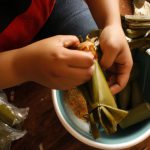
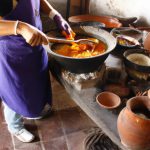

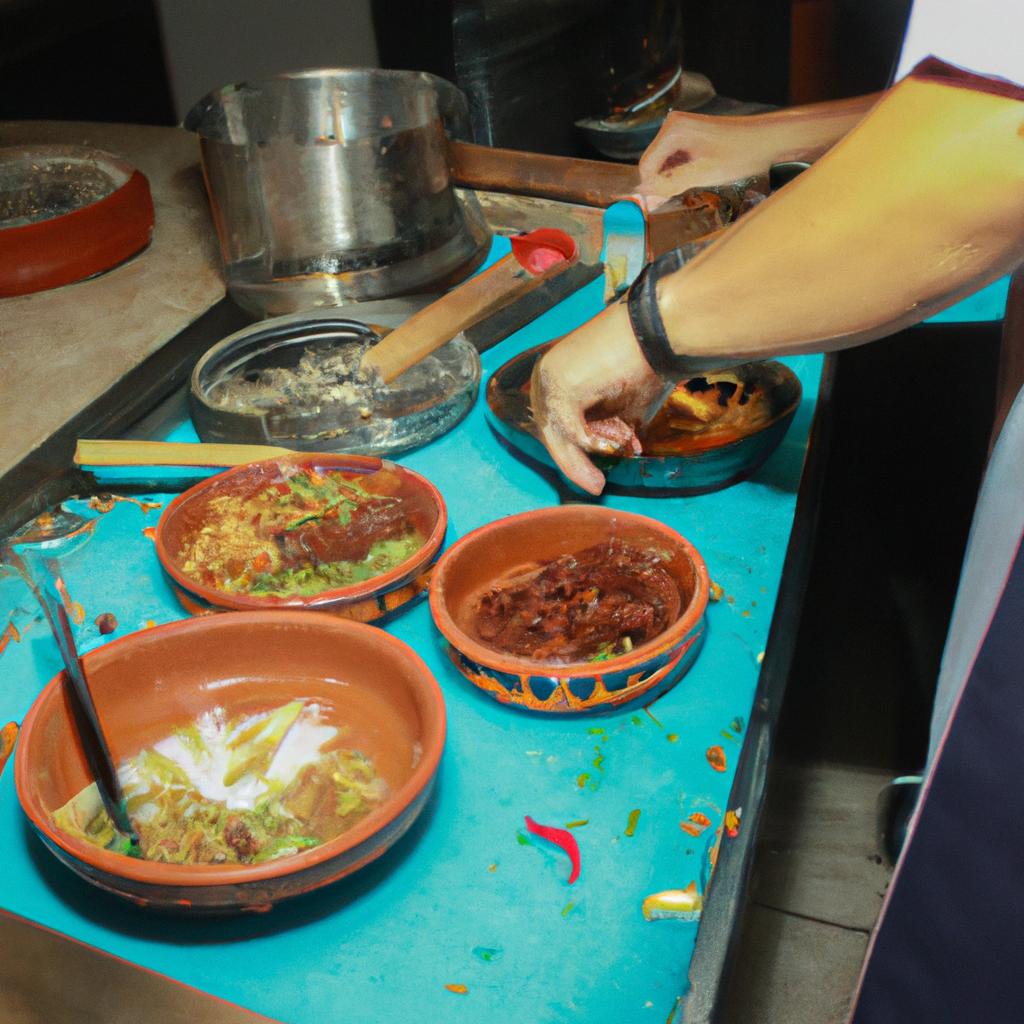
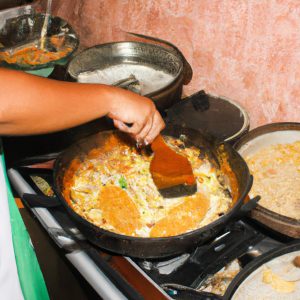
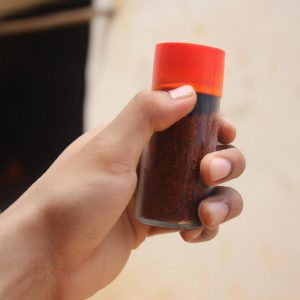
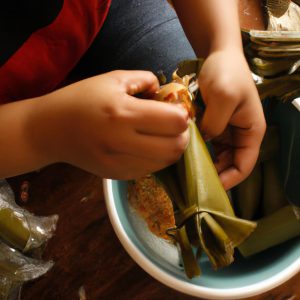
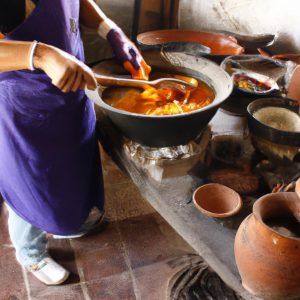
More Stories
Michoacan Cuisine: Regional Varieties of Mexican Food
Veracruzana Cuisine: Regional Varieties of Mexican Food
Tex-Mex: Regional Varieties of Mexican Food